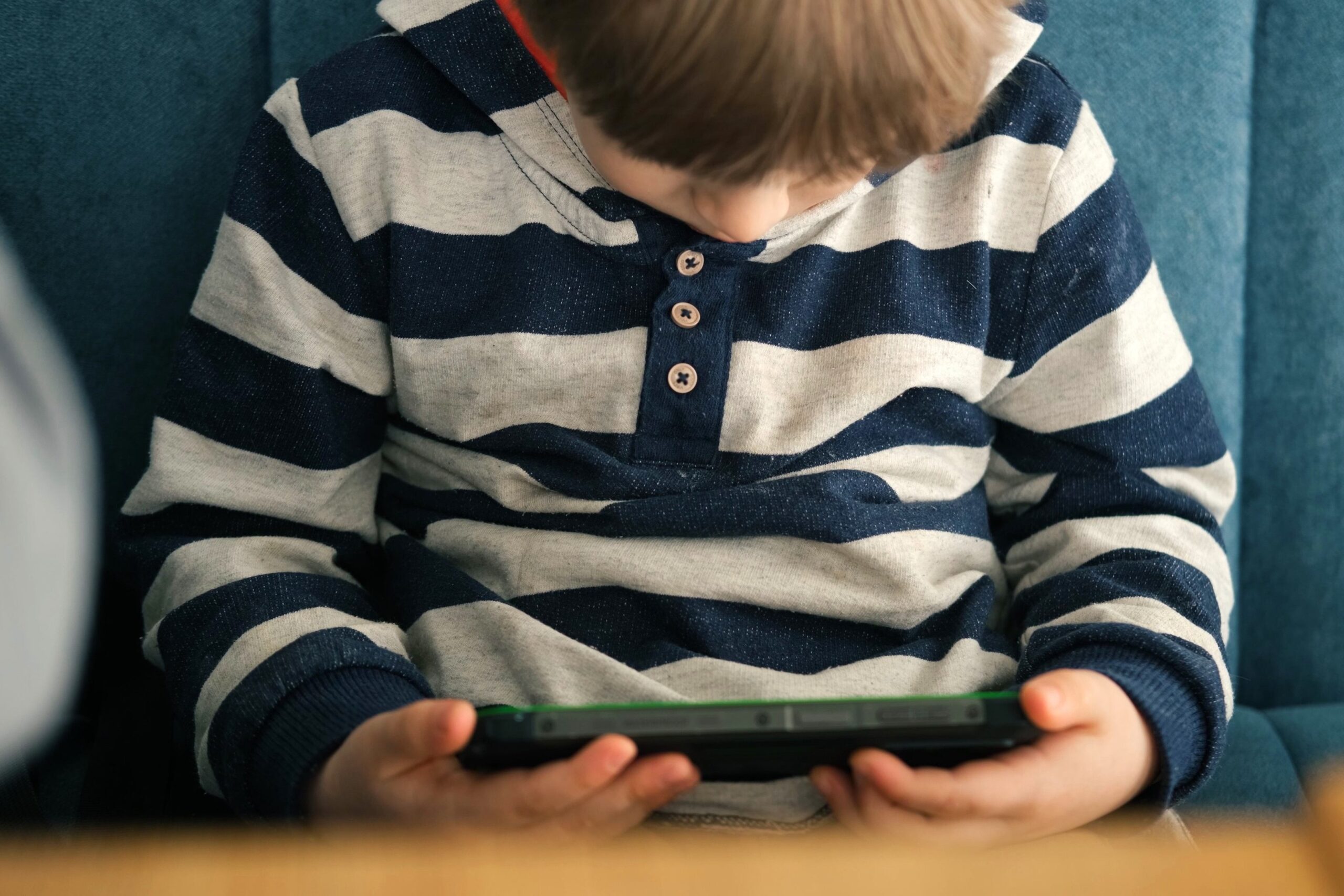Distracting Kids with Phones: An Expert’s Perspective You Need
Toddlers and restaurants… Does it really matter if I hand my child my phone when we go out to dinner? I just want to enjoy the meal!
For any experienced parent, this is a cringe-worthy combination. Toddlers are in what Piaget deemed the Sensorimotor stage of cognitive development; they learn and gather information about the world by exploring it with all five senses (Beck, 2007. P 20).
Playgrounds and parks align with what toddler brains crave. Libraries, museums, and restaurants do not. This is where technology has entered the game.
Our phones and tablets offer us an easy, efficient, and effective way of bridging the gap between what our toddlers are capable of developmentally, and what we are expecting of them in any given situation.
There are times when it is justified and reasonable to utilize this bridge to cope with high demand and uncommon expectations. On a day-to-day basis, however, it is not a device that should bridge the gap. It is us.
If we consistently pacify our children with a screen, we miss out on the critical role that we play in modeling situational behaviors that shape how they learn to interact with the world as they grow.
“But is my toddler really learning anything when we take them out to eat?“
Absolutely. They are building the skills that will make it possible to, someday, sit down as a family at a restaurant and enjoy a meal together.
Here are two major lessons we don’t even realize we are teaching them.
Social Norms
Children do not inherently know what society expects of them. They learn it from us. Any time we “shhhhh” them in a quiet space, show them how to put things in the trash, or instruct them to use walking feet indoors, we are educating them on societal norms.
Developmental theory encourages, actually mandates, that we take our young children for outings on a regular basis because this is when they do some of their most crucial learning about the world around them.
Let’s think about what they experience at a restaurant.
They notice their father hold the door for their mother to walk in first. They get overwhelmed by the crowds and noise and huddle into your leg to hide. You give a back rub and some words of encouragement, and the child’s brain receives vital information about their safety and their ability to persevere despite their discomfort.
You engage them in a literacy activity as you read them the menu. You provide them essential opportunities for autonomy as you talk with them about what they would like to eat for dinner. They hear you say “please”, and “thank you” as you order. They get bored, and they are forced to practice waiting. They throw utensils, and they are disciplined.
This is brain food, and it is essential to their ability to succeed in society.
These lessons are exhausting to teach and require most of our attention, and in reality often means that the experience is far less enjoyable for us. However, the toddler who is watching a movie on a phone is not learning what society expects of them, but is rather escaping society all together.
Emotional Self-Regulation
Emotional self-regulation refers to how we use voluntary and purposeful strategies to adjust our emotional state (Berk, 2007. P 189). This control is considered a major contributing factor to a child’s overall temperament, and the development of this skill in the first two years of life significantly increases or decreases children’s ability to master subsequent essential cognitive and social skills (Berk, 2007. P 189).
Toddler emotional self-regulation is still mostly dependent on co-regulation with a caregiver. Toddlers rely on parent guidance and assistance in moments of intense emotion, and they use various cues to let parents know they are experiencing them.
In a restaurant setting, this may look like a toddler hiding, crying, or tugging on caregiver clothing to signal they are having some big feelings.
In the chaos of a loud environment where parents are managing multiple stimuli (reading a menu, engaging in an adult conversation, trying to order drinks), these support-seeking behaviors can often be perceived as annoying.
It’s not because we are bad parents. It’s because we, too, are overstimulated or overwhelmed.
Devices have given us a fast and easy way to give ourselves time to breathe, think, or enjoy a moment. But when we use them to calm our kids down, we have neglected to give their brain the information it was actually seeking about how to handle their discomfort.
Instead of a device, maybe you pick them up and hold them for a few minutes. Now you’ve provided them important feedback that they are safe. If you take them for a short break outside for some movement and fresh air, you teach them that when they feel overwhelmed they can seek a quiet space to help them re-set. When parents engage kids in a sticker book at the table, they show them how attending to a goal-oriented task or using their creativity can provide comfort during moments when they are required to wait.
By pacifying children’s behaviors, we are missing countless opportunities for co-regulation. They are lacking vital input on how to exercise control of their feelings and develop the self-control that we desperately want them to exert as they continue to age and mature.
But how do we break free?
The simplest and most significant change to lessen our technology use with our kids in challenging environments is to adjust our own expectations.
If we enter into a situation seeking relaxation or enjoyment, it is almost inevitable that our children’s behaviors will not align with our goals and we will end up pulling out a device to help us achieve them.
If we change our goals, our own ability to tolerate those same behaviors increases drastically. We suddenly feel the capacity to manage them differently.
Changing Our Goals Looks Like:
- Recognizing the importance these experiences play in helping our children reach vital developmental goals
- Reminding ourselves that their behaviors are appropriate for their age
- Regulating our own emotional responses and expectations to increase our capacity for their discomfort
- Repeating the positives when things feel hard. “I am walking around outside when I want to be sitting down eating a hot meal, but I still won’t have any dishes to do after bedtime!”
Expect to take breaks. Expect to take turns eating. Pack a bag of activities, or leave a restaurant activity bag in your car to have on hand. Order your toddler their trusty favorite, even if it’s not what you are most excited about them eating. Make it special and motivate positive behaviors with an incentive like dessert or a special song on the way home.
All of these small changes can support increased parent resiliency, so we can better help our kids build more of their own.
If you enjoyed this article, you may also enjoy reading an article we wrote about Why We Use our Phones in Socially Uncomfortable Places. Thanks for reading!
References: Berk, L. E. (2007). Development through the lifespan (4th Ed). Allyn and Bacon.

Courtney G. DiStefano, CCLS
Courtney G. DiStefano is a Certified Child Life Specialist, child development expert, and mom of three with nearly fifteen years of clinical experience serving children and families in hospitals and social-service settings.




